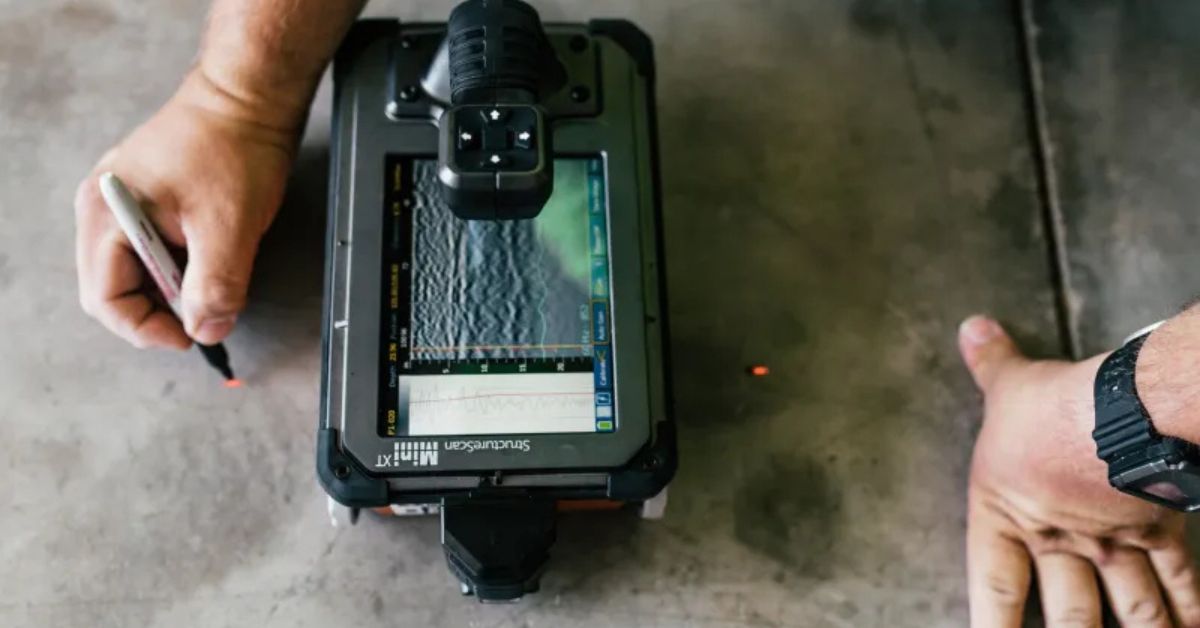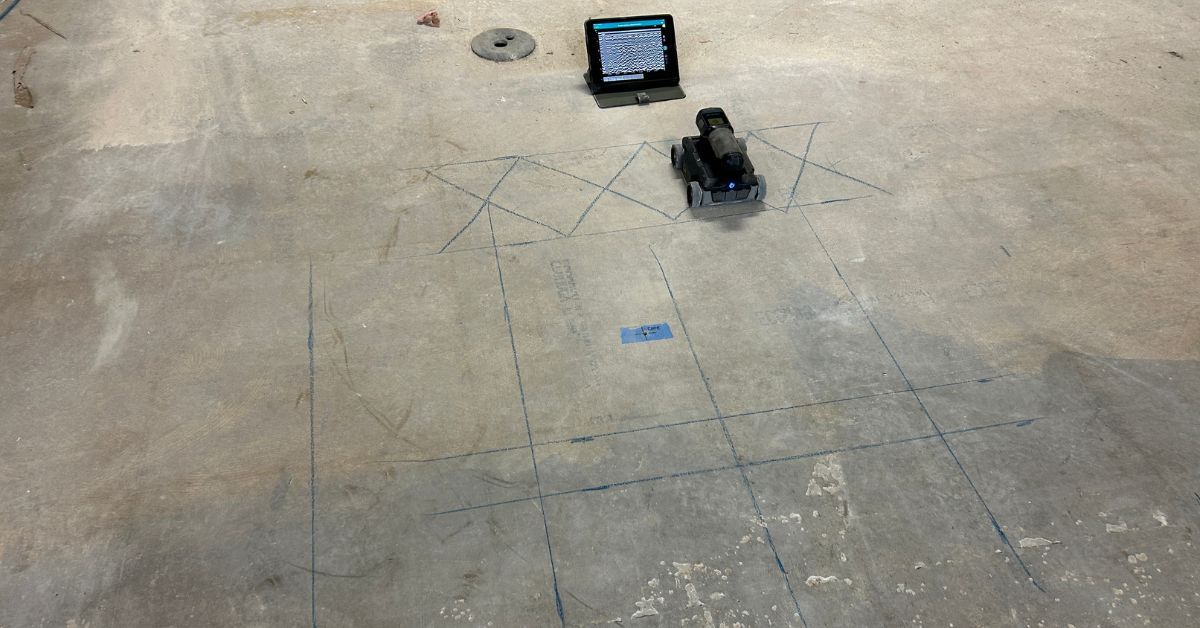
Concrete projects demand precision, safety, and reliability. Whether you're planning to modify existing structures, assess structural integrity, or avoid costly mistakes, knowing what lies within and beneath the concrete you're working with is vital. This is where concrete scanning services come in. But how do you know when to call in the experts?
To help you avoid unnecessary risks, delays, and expenses, we'll walk you through the telltale signs that you need concrete scanning services. We'll explain what concrete scanning is in detail, its benefits, and where you can find reliable services.
What Concrete Scanning Is and How It Works
Concrete scanning is a non-invasive and highly effective method to detect and map objects or anomalies within concrete structures. This advanced technique helps professionals gain a clear understanding of what lies beneath the surface of concrete without the need for destructive drilling or cutting. Experts utilize tools like ground-penetrating radar (GPR) and other sophisticated equipment to perform these scans, providing accurate and detailed data about internal structures.
A quality scan identifies hidden elements, including rebar, post-tension cables, voids, conduits, utility lines, and even potential hazards like cracks or weak points. This information is crucial for construction projects, renovations, or structural analysis, as it allows teams to plan effectively and avoid damaging critical components.
By creating a precise visual representation of hidden elements within the concrete, these scans empower professionals to make informed decisions, saving time, reducing costs, and ensuring safety. Whether working on a new construction site or analyzing an existing structure, concrete scanning is invaluable for maintaining structural integrity and minimizing risks.
Benefits of Choosing Concrete Scanning Services
There are many reasons that a construction company, utility maintenance engineer, or other professional may utilize concrete scanning services. From protecting workers to improving efficiency, concrete scanning provides many benefits to projects.
Enhanced Safety for Workers and Structures
One of the primary advantages of concrete scanning services is the ability to enhance safety on a construction site. By precisely identifying hidden elements, such as rebar, post-tension cables, or electrical conduits, operators minimize the risk of accidental damage. This proactive approach protects both workers and the project's structural integrity, preventing costly accidents and ensuring compliance with safety standards.
Improved Project Efficiency
Concrete scanning streamlines the project timeline by reducing the likelihood of unexpected delays from damaging rooted objects in the concrete. Project teams can plan their work with greater accuracy and avoid unnecessary interruptions. This level of efficiency is crucial for staying on schedule and mitigating delays that could otherwise increase labor and material costs.
Cost Savings and Long-Term Value
Concrete scanning reduces the chance of expensive repairs and project setbacks by identifying potential issues before drilling, cutting, or coring begins. Avoiding damage to utilities or structural components eliminates additional costs and ensures the effective use of resources. The upfront cost pays for itself many times over through smoother project execution and structures that maintain their integrity for years to come.

8 Signs You Need Concrete Scanning Services
While concrete scanning GPR clearly has many benefits, knowing exactly when to use this technology makes all the difference. Here are eight signs that you need concrete scanning services for your project to protect workers, save on costs, and ensure project efficiency.
1. Planning To Cut or Core Concrete
If you're preparing to cut or core concrete, you need to know what's beneath the surface to avoid striking hidden objects. Concrete scanning ensures you don't accidentally damage vital utilities, rebar, and conduits during the process. Without scans, you risk costly repairs and potential project delays.
For example, if you need to core into a building wall, you don't want to discover live electrical conduits after the fact. A simple scan beforehand eliminates hours or days of emergency repairs and project chaos.
2. Structural Assessments Required
When conducting routine or mandatory structural evaluations, concrete scanning provides valuable data on embedded reinforcement and internal conditions. Scans reveal the placement and spacing of rebar, identify voids or honeycombing, and assess the overall structural integrity of the concrete.
Many structural engineers rely on these scans to ensure the building of renovations, retrofits, or upgrades on stable foundations. Without this step, assumptions about concrete conditions may be costly and unsafe.
3. Avoiding Utility Strikes
One of the most common and expensive mistakes in construction projects is striking hidden utility lines during excavation, drilling, or coring. These incidents jeopardize worker safety and lead to unplanned outages or delays.
Concrete scanning allows contractors to map and mark underground utilities with precision, minimizing the risk of any disruption. For example, it can identify the presence of water pipes beneath a slab, enabling workers to avoid costly and dangerous mistakes.
4. Detecting Rebar and Post-Tension Cables
Reinforcement, such as rebar and post-tension cables, plays a crucial role in maintaining the structural integrity of concrete buildings. Cutting or damaging these elements could severely compromise a project.
Concrete scanning helps you locate and map rebar and post-tension cables before beginning any disruptive work. This ensures workers avoid mistakes resulting in additional costs, structural failure, and safety violations.
5. Evaluating Concrete Integrity
Over time, concrete can develop voids, honeycombing, or other imperfections due to improper pouring techniques or persistent exposure to elements. If your project involves retrofitting or extending an existing structure, scanning can identify these internal flaws. By using advanced scanning technologies, professionals can assess the condition of the concrete without performing invasive tests, thus preserving the structure while making safe and informed decisions.
6. Minimizing Project Downtime
Construction timelines can be tight, leaving little room for errors or delays. Concrete scanning accelerates project workflows by providing detailed information upfront, reducing the chances of surprises mid-project. If you're working on a commercial development site, scanning ahead of time prevents accidents or discoveries that could derail your timeline and impact your bottom line.
7. Enhancing Safety

Concrete scanning mitigates these risks by delivering clarity and accuracy. Whether you're avoiding hazardous live wires or ensuring structural stability, scanning safeguards everyone involved in the project.
8. Ensuring Accurate Mapping of Inserted Objects
Precision is key to any construction or engineering project. Concrete scanning allows you to accurately map conduits, pipes, rebar, voids, and other objects within concrete, creating a clear visual roadmap for your team.
This level of accuracy is especially critical for projects involving complex modifications or installations where every detail matters. Proper mapping ensures seamless coordination and lowers the risk of unexpected difficulties during project execution.
Choose MPL for Your Concrete Scanning Needs
Concrete scanning is not just an optional precaution; it's an essential step in modern construction and renovation projects. Whether you're protecting utilities, ensuring worker safety, or evaluating your structure's integrity, the insights these scans provide save you time, money, and unnecessary stress.
At Mason Private Locating (MPL), we leverage cutting-edge scanning technologies and a team of trained experts to deliver results you can rely on. Don't take risks with your project's success. Contact MPL to discuss your specific needs and schedule professional concrete scanning services today.













